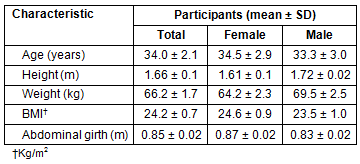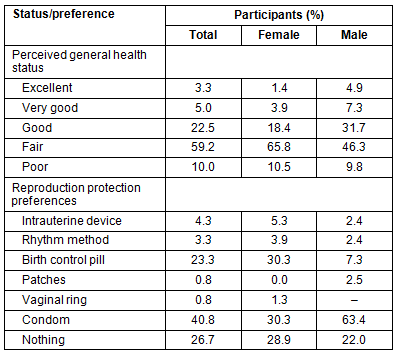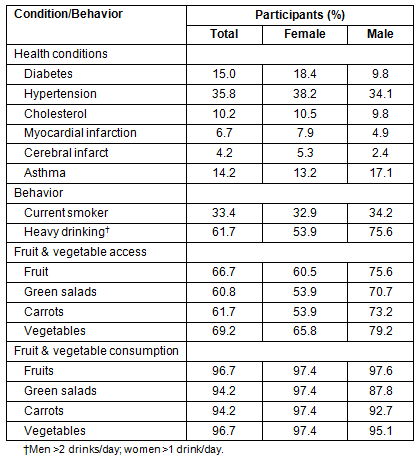The Dominican Republic occupies two-thirds of the island of Hispaniola, and lies between the islands of Puerto Rico to the east and Cuba to the west in the Caribbean Sea. In 2006 the country's population was estimated at 9.6 million, with 32% living in rural areas1. The World Health Organization's (WHO) 2006 World Health Report ranked the Dominican Republic 79th with respect to health and 97th in terms of health distribution, out of the other 194 countries in the world1. The rankings in part reflect a health system that is not performing well in the prevention and control of disease. For example, the country had a low average life expectancy of 67 years, an under 5 mortality rate of 32 per 1000 live births, and a maternal mortality of 150 per 100 000 live births1. The estimated crude mortality rate for the period 1995-2000 was 6 per 1000 population; however, this number may not be accurate because under-registration is believed to be as high as 42%1. In 2002 the top ten causes of death in the country included: cardiovascular diseases, infectious diseases, perinatal conditions, diabetes mellitus, road traffic accidents, and cirrhosis of the liver1,2.
Faring worse are those in the Dominican Republic who live in rural areas where primary healthcare services are largely under-developed. One study in particular used the results from the 2002 Dominican Republic Demographic and Health Survey to investigate, among other health statistics, differences in health status between rural and urban populations3,4. Rural populations had a higher infant mortality rate, and a greater percentage of children younger than 5 years old with acute malnutrition, chronic malnutrition or diarrhea in the 2 weeks prior to survey5. In addition, rural populations had a lower percentage of children 12 to 23 months of age who had been vaccinated with bacillus Calmette-Guérin , diphtheria, pertussis, tetanus, hepatitis B , polio, or measles5. Carman et al examined differences in health status between rural and urban communities and found that conditions such as gastrointestinal ailments, anemia, and hypertension were diagnosed more frequently in the rural setting6.
The lack of heathcare facilities is thought to be the underlying reason for the observed health disparities between rural and urban communities in countries such as the Dominican Republic6. On average, individuals in rural Dominican communities travel twice as long to reach public healthcare facilities, and four times as long to reach private healthcare facilities as compared with urban dwellers7. A shortage of adequately trained health professionals is also a problem. Health professionals are more likely to live and work in more affluent urban areas where they are able to earn a higher income. Medical care in rural areas is usually provided by interns and new health professionals with minimal field experience, who leave once they have completed their required time8. In addition, scarce human and economical resources make it difficult to conduct prevention interventions9. Prominent mortality under-reporting and misclassification of diseases8 also occur in rural settings, further complicating the situation. Without accurate disease distribution data, the implementation of tailored primary and secondary prevention programs that address the specific health problems affecting individuals living in these areas is nearly impossible.
Over the past 6 years, the present multidisciplinary team of healthcare professionals, in collaboration with civic and religious organization in the province of San Cristobál (Dominican Republic), have been organizing annual health fair clinics. In addition to routine primary care and selected medical specialty services (according to medical specialist availability), the team also provides health education sessions that are based on the priority needs of the community, such as chronic diseases (eg hypertension and diabetes), woman's health, violence, HIV/AIDS, and sanitation. Despite annual visits to three rural communities, no formal research or surveillance efforts into documenting the health conditions and behavioral activities of these communities had been undertaken among the health fair attendees.
In the present study, general health status, health conditions, and behaviors were examined of adults attending a health fair in one of three rural Dominican villages to: (i) document these characteristics for those individuals that attended the health fairs in a rural setting in the Dominican republic; and (ii) identify health and behavioral issues of greatest concern among attendees in this rural setting, in order to inform future health fair organization.
Participant recruitment
Adults receiving medical care, attending educational sessions, and/or accompanying friends and relatives during a March and April 2009 health fair were invited to participate in a brief, standard, anonymous questionnaire administered by the study team. Recruitment was in the rural towns of Hoyos de Niza, Las Cabirmas, and Ranchos al Medio, all within the province of San Cristobál. The health fair was held daily, starting at 9 am and ending generally between 18.00 and 19.00. The invitation to participate included a brief discussion of the study's purpose, as well as an evaluation of the participant's eligibility. All participants 18 years of age or older, fluent in Spanish (written or spoken), and of Dominican descent were eligible to participate (n = 237). Following the invitation, participants were provided with a copy of the consent form if the patient desired. Participants were not provided with any incentives for their participation. The paper-based health survey was either self-administered by the study participant or, for those participants who could not read Spanish, administered by trained Spanish-native interviewers.
Questionnaire and measures
The health survey used in this study was adapted from the Centers from Disease Control's (CDC) Behavioral Risk Factor Surveillance System (BRFSS), and already translated and validated in both English and Spanish10. The 30 item questionnaire was designed to assess demographics, perceived general health status and healthcare access, and prevalence of health conditions and health behaviors. The prevalence of diabetes, hypertension, high cholesterol, asthma, myocardial infarction (heart attack), and cerebral infarction (stroke) were based on self-report of a previous diagnosis by a doctor. Specifically, participants were asked: 'Have you EVER been told by a doctor, nurse, or other health professional that you have [health condition here]?' Alcohol use was ascertained using two standardized population-based survey questions on alcohol consumption. Participants were asked: 'During the past 30 days, have you had at least one drink of any alcoholic beverage such as beer, wine, a malt beverage or liquor?' and 'During the past 30 days, how many days per week or per month did you have at least one drink of any alcoholic beverage?' Tobacco consumption was evaluated through the question 'Do you now smoke cigarettes every day, some days, or not at all'? The intake of vegetables and fruits was assessed by the question: 'Do you consume: a) fruits, b) green salad, c) carrots, d) vegetables' with the response variables being 'yes' or 'no' for each. One survey question asked about current use of contraceptives, with the answer choices: 'a) intrauterine device, b) rhythm method, c) birth control pill, d) patch, e) ring, f) condom g) none'.
All health conditions questions were dichotomized to a yes or no response. 'Heavy drinking' was defined as men who consumed greater than two drinks per day and women who consumed greater than one drink per day11. Participants who reported smoking at least 100 cigarettes in their lifetime were asked if they now smoked 'every day, some days, or not at all'; those responding that they smoked every day or some days were considered 'current smokers'.
Anthropometric measurements
Following completion of the survey, participants were measured using the standard National Health and Nutrition Examination Survey (NHANES) protocol to the nearest 0.1 cm for height using a standard Gulick II tape measure12. All measurements were taken with participants in erect standing posture to obtain maximum standing height. Weight was measured to the nearest 0.10 kg using a Tanita HD-351digital scale (www.tanita.com/digital-scales), which was placed on a firm, flat surface. Participants were asked to remove shoes or heavy pocket contents, and to stand in the middle of the scale's platform with the body weight equally distributed on both feet. BMI was then computed.
Statistical analysis
Descriptive statistics using SPSS 17.0 for Windows (www.spsss.com) were calculated for all study variables.
Ethics approval
This study was approved by the University of Miami's Institutional Review Board (#20090178).
A total of 117 health surveys were completed by study participants during the health fairs; specifically 31 surveys in the town of Hoyos de Niza, 30 in Las Cabirmas, and 59 in Ranchos al Medio (49% response rate). The ages of the participants ranged from 18 to 79 years old (mean ± standard deviation; 34.0 ± 2.1), height from 1.4 to 2.0 m (1.7 ± 0.1), weight from 41.8 to 100.0 kg (66.2 ± 1.7). For the 76 women (63%), BMI ranged from 16.8 to 43.2 (24.2 ± 0.7). For the 41 men (37%), BMI ranged from 16.4 to 36.3 (23.5 ± 1.0) (Table 1). Statistical analysis did not demonstrate significant differences in BMI by site or by sex.
Table 1: Demographic characteristics of Dominicans in rural Hoyos de Niza, Las Cabirmas,
and Ranchos al Medio regions participating in the March and April 2009 health fair (n=117)

When asked to report their perceived general health status, 69.2% reported fair to poor health (Table 2). Almost 36% of respondents reported having been previously told by a healthcare professional that they had high blood pressure (Table 3). Diabetes (15.0%) and asthma (14.2%) were also noted to be prevalent among the sample; however, diabetes was highest in females (18.4%) and asthma highest in males (17.1%). Consumption of 3 or more alcoholic drinks per week was 61.7% in the sample, and highest in males (75.6%). In addition, 33.4% were current smokers (32.9% females and 34.2% males). Although access to fruit (75.6%), green salads (70.7%), carrots (73.2%), and vegetables (79.2%) was reportedly highest for males, the actual consumption of the same items was highest for females (97.4% for all items, respectively). During sexual activity, 40.8% of respondents indicated they used a condom, while 26.7% used no condom. Among men, condom use was highest (63.4%), while among women condom (30.3%) and birth control pills (30.3%) were the more prevalent options.
A majority of study participants needed more than 10 min (60.0%) to access consumable water (Table 4). Approximately 75.8% obtained water by foot traveling, 96.7% carried the water from its source back to their respective homes in a plastic container, and 85% stored the water in a plastic container.
Table 2: Self-report of general health status and reproductive protection preferences among
Dominicans in rural Hoyos de Niza, Las Cabirmas, and Ranchos al Medio regions
participating in the March and April 2009 health fair (n=117)

Table 3: Prevalence of health conditions, health behaviors, and fruit access and consumption among
Dominicans in rural Hoyos de Niza, Las Cabirmas, and Ranchos al Medio regions
participating in the March and April 2009 health fair (n=117)

Table 4: Self-report of time to access water, method of water transportation, and water storage among
Dominicans in rural Hoyos de Niza, Las Cabirmas, and Ranchos al Medio regions
participating in the March and April 2009 health fair (n=117)

Discussion
Among Dominicans attending a health fair in the rural towns of San Cristobál Province during March and April 2009, a high prevalence was found of health conditions, as well as modifiable negative health risk factors (such as cigarette and alcohol consumption). There have been very few previous reports of the prevalence of chronic diseases and their related risk factors among Dominicans residing in rural areas13,14. High blood pressure, diabetes, and asthma were found to be among the highest reported health conditions. These estimates were different from those documented by Acosta et al among urban-dwelling adults in the Dominican Republic4. Developing health policy directed at monitoring the health status of and delivery of health services to rural communities should be informed by precise estimates of disease prevalence and burden. This is lacking for most chronic diseases in most countries of Latin America, including the Dominican Republic, which has a large proportion of low- and middle-income communities14,15. Developing surveillance activities in these rural areas through community based health fairs may be one way to support a comprehensive health surveillance system.
Perceived health, or how people feel about their physical and mental health, has been recognized as a predictor of illness, mortality and functional disability16,17. In addition, studies show that persons who are in fair or poor health tend to have higher rates of medically attended injury than persons who have excellent, very good, or good health18. It was found that almost 70% of study participants reported fair to poor health status. Other studies have shown how perceived health status might be associated with the use of health services and with specific pathological conditions, especially chronic diseases such as musculoskeletal, cardiovascular, and psychiatric disorders17,18. Therefore, developing primary and secondary intervention programs that could be delivered through health fairs in these rural areas may assist in improving perceived health status19.
Almost 60% of the participants completing the survey at the health fair were able to access fruits, green salads, carrots and vegetables, while almost 95% reported that they consumed all types of fruits and vegetables. Increasingly research suggests that fruits and vegetables protect against cardiovascular diseases and some cancers, although their precise contribution has been unclear. Until now, however, there has been no attempt to estimate the local availability and consumption in the Dominican Republic, especially in rural areas. Based on the present authors' experience, men were more likely to obtain fruits and vegetables at sites very distant to the home, usually at work or a large city, and bring those items back to the home. Efforts can be directed at teaching families how to plant, grow and harvest their own local fruits and vegetables that might prove greatly beneficial, given their high interest in consuming such items. Planting a community vegetable garden could support an economy and improve access to vegetables in their own communities20,21.
Sexual contact is the most common route of sexually transmitted infections (STI) among general populations worldwide22. Condom use, therefore, remains central to STI prevention interventions, as well as to family planning/birth control. Behavioral surveillance surveys as well as programmatic evaluations that typically focus on self-reported condom use are also important indicators to decrease STIs and support family planning23. Researchers have published a number of reviews on the challenges of accurately measuring sexual behavior and safety practices in the past decade, and have issued calls for improving and standardizing measures and methods24,25. The general consensus is that the reliability and validity of self-reporting, while questionable, still remains most appropriate25. It was found that men preferred to use condoms, while women preferred equally either birth control pills or condoms as their personal reproductive protection preferences. Based on the experience of the interviewers, differences in perceived efficacy of using a condom, as well as the availability of condoms in the local community may be contributory factors.
The proper usage of sanitation, hygiene, and safe drinking water are all mechanisms to prevent and limit microbial contamination, and reduce the risk of disease26. Without access to protected water sources, there is greater potential for contamination of drinking water27. Often in the Dominican Republic, due to lack of infrastructure families collect and store water in the home, both for drinking and other household purposes. It was found that a significant proportion of the study sample traveled more than 10 min to reach their primary source of fresh drinking water. In addition, a vast majority used plastic containers to transport and store their water supply. In some cases, they treat the water themselves at the household level. Because water quality plays such an important role in the health of these communities, it is imperative that future studies monitor and examine risk factors for fresh drinking water access27. These include household water management practices and beliefs regarding water collection and storage.
Strengths and limitations
One major limitation was that all study measures were self-reported. It was not possible to obtain medical records to validate the self-report of chronic diseases. In addition, the sample was self-selected and of a relatively small size that did not adequately capture the full universe of these rural residing adults. For example, during the evening members of the health fair team would conduct house calls to examine individuals who had disabilitiesor physical impairments that would prevent their attendance at the fair during scheduled hours. In addition, many of the men were at work during the health fair hours, restricting the majority of participants to household women and children.
The health fair setting was very dynamic where health fair attendees registered at the main table, and then often waited 2-3 hours (if not more) before they were seen by a healthcare provider. During their wait, participants would walk around the health fair grounds, where other activities such as a educational sessions and survey participation were made available. The study team erected a quiet research area adjacent to the main registration table at each rural community to invite as many health fair attendees as possible. For the majority of the time, surveys were not fully completed because participants went to healthcare providers as soon as they became available.
Nonetheless, this study provides baseline characteristics of the health conditions and behaviors of adults attending a health fair in the rural Dominican towns of Hoyos de Niza, Las Cabirmas, and Ranchos al Medio. The data obtained from this study will also inform future health fair visits to these towns as well as the local government in planning community health services that are a priority to the community.
An important finding from this exploratory study was that the prevalence of health conditions and health behaviors vary among health fair attendees from these three rural Dominican communities28,29. These communities often are isolated and reside far from a city that has medical services or a hospital. Annual monitoring of the health status and behaviors of these rural communities, through these annual health fairs using standardized health questionnaires, will better inform the organization of future health fairs, as well as medical and educational services needed to improve the quality of life for these rural residents attending the health fair.
Acknowledgements
The authors thank all survey participants and their families for participating in this study. They acknowledge the unwavering support of the Dominican Republic Ministry of Health, and religious organizations that promote and support the health fair in these rural villages. The authors also would like to acknowledge the EU Convergence funding to the European Centre for Environment and Human Health.
References
1. WHO. The global burden of disease: 2004 update. Geneva: World Health Organization, 2008.
2. Bern C, Martines J, de Zoysa I, Glass R. The magnitude of the global problem of diarrhoeal disease: a ten year update. Bulletin of the World Health Organization 1992; 70: 705-714.
3. Anon. Dominican Republic 2002: results from the Demographic and Health Survey. Studies in Family Planning 2006; 37(4): 293-298.
4. Acosta D, Rottbeck R, Rodríguez JG, González LM, Almánzar MR, Minaya SN et al. The prevalence and social patterning of chronic diseases among older people in a population undergoing health transition. A 10/66 Group cross-sectional population-based survey in the Dominican Republic. BMC Public Health 2010; 10: 344.
5. Pruss-Ustun A, Corvalan C. Preventing disease through healthy environments: towards an estimate of the environmental burden of disease. Geneva: World Health Organization, 2006, 104.
6. Carman SK, Scott J. Exploring the health care status of two communities in the Dominican Republic. International Nursing Review 2004; 51(1): 27-33.
7. Thind A, Andersen R. Respiratory illness in the Dominican Republic: what are the predictors for health services utilization of young children? Social Science and Medicine 2003; 56(6): 1173-1182.
8. Westhoff WW, Calcano ER, McDermott RJ, Trudnak TE, Lopez GE. Estimating maternal mortality in Monseñor Nouel Province, Dominican Republic. Maternal and Child Health Journal 2009; 13(5): 707-714.
9. Phillips SJ, Knebel A (Eds). Mass Medical Care with Scarce Resources: A Community Planning Guide. AHRQ Publication no. 07-0001. Rockville, MD: Agency for Healthcare Research and Quality, 2007.
10. Centers for Disease Control and Prevention. RFSS Annual Survey Data. (Online) 2011. Available: http://www.cdc.gov/brfss/technical_infodata/surveydata.htm (Accessed 27 March 2012).
11. Centers for Disease Control and Prevention. Alcohol and Public Health. (Online) 2011. Available: http://www.cdc.gov/alcohol/index.htm (Accessed 24 April 2010).
12. National Heart, Lung and Blood Institute. Clinical Guidelines on the Identification, Evaluation, and Treatment of Overweight and Obesity in Adults - The Evidence Report. National Institutes of Health. Obesity Research 1998; (Suppl2): 51S-209S. Available: http://www.nhlbi.nih.gov/guidelines/obesity/ob_gdlns.htm (Accessed 21 August 2006).
13. Sousa RM, Ferri CP, Acosta D, Albanese E, Guerra M, Huang Y et al. Contribution of chronic diseases to disability in elderly people in countries with low and middle incomes: a 10/66 Dementia Research Group population-based survey. Lancet 2009; 374(9704): 1821-1830.
14. Acosta D, Rottbeck R, Rodríguez G, Ferri CP, Prince MJ. The epidemiology of dependency among urban-dwelling older people in the Dominican Republic; a cross-sectional survey. BMC Public Health 2008; 8: 285.
15. Tucker KL, Falcon LM, Bianchi LA, Cacho E, Bermudez OI. Self-reported prevalence and health correlates of functional limitation among Massachusetts elderly Puerto Ricans, Dominicans, and non-Hispanic white neighborhood comparison group. Journals of Gerontology A: Biological Sciences and Medical Sciences 2000; 55(2): M90-97.
16. White AM, Philogene GS, Fine L, Sinha S. Social support and self-reported health status of older adults in the United States. American Journal Public Health 2009; 99(10): 1872-1878.
17. Centers for Disease Control and Prevention (CDC). Racial/ethnic disparities in self-rated health status among adults with and without disabilities - United States, 2004-2006. MMWR Morbidity and Mortality Weekly Report 2008; 57(39): 1069-1073.
18. Deeg DJ, Kriegsman DM. Concepts of self-rated health: specifying the gender difference in mortality risk. Gerontologist 2003; 43(3): 376-86, 372-375.
19. Goldberg P, Guéguen A, Schmaus A, Nakache JP, Goldberg M. Longitudinal study of associations between perceived health status and self reported diseases in the French Gazel cohort. Journal of Epidemiology and Community Health 2001; 55(4): 233-238.
20. Bushamuka VN, de Pee S, Talukder A, Kiess L, Panagides D, Taher A et al. Impact of a homestead gardening program on household food security and empowerment of women in Bangladesh. Food and Nutrition Bulletin 2005; 26(1): 17-25.
21. Bloem MW, Huq N, Gorstein J, Burger S, Kahn T, Islam N et al. Production of fruits and vegetables at the homestead is an important source of vitamin A among women in rural Bangladesh. European Journal of Clinical Nutrition 1996; 50(Suppl3): S62-S67.
22. Edwards S, Carne C. Oral sex and the transmission of viral STIs. Sexually Transmitted Infections 1998; 74(1): 6-10.
23. Fleming KL, Sokoloff A, Raine TR. Attitudes and beliefs about the intrauterine device among teenagers and young women. Contraception 2010; 82(2): 178-182.
24. Orr DP, Langefeld CD, Katz BP, Caine VA. Behavioral intervention to increase condom use among high-risk female adolescents. Journal of Pediatrics 1996; 128(2): 288-295.
25. Konings E, Bantebya G, Caraël M, Bagenda D, Mertens T. Validating population surveys for the measurement of HIV/STD prevention indicators. AIDS 1995; 9(4): 375-382.
26. Bern C, Martines J, de Zoysa I, Glass R. The magnitude of the global problem of diarrhoeal disease: a ten year update. Bulletin of the World Health Organization 1992; 70: 705-714.
27. Parazzini F, Levi F, Lucchini F, La Vecchia C. Trends in neonatal and infant mortality in five continents. Soz Praventivmed 1997; 42(4): 230-250.
28. Whiteford LM. A question of adequacy: primary health care in the Dominican Republic. Social Science and Medicine 1990; 30(2): 221-226.
29. Bale B. Optimizing hypertension management in underserved rural populations. Journal of the National Medical Association 2010; 102(1): 10-17.










